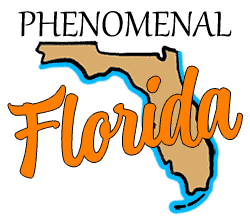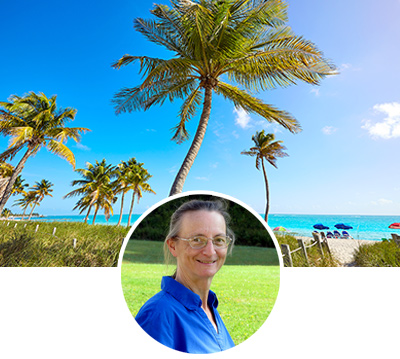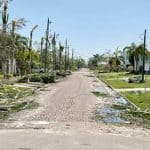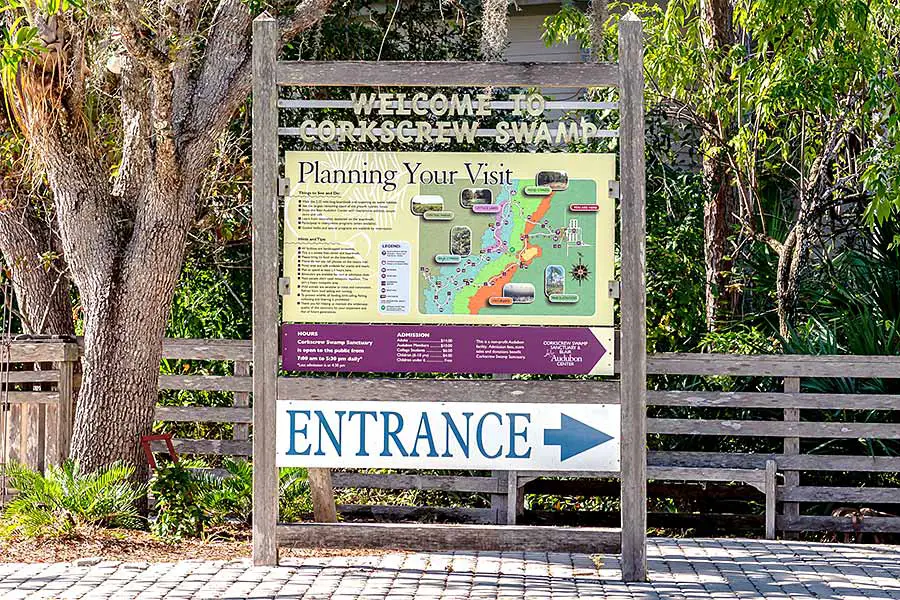
Located about 30 minutes from Naples, the Corkscrew Swamp is a 13,450-acre nature preserve located in Southwest Florida. Corkscrew Swamp is mostly comprised of wetlands but is notable for having more than 700 acres of virgin bald cypress forest. So you may be wondering, is Corkscrew Swamp part of the Everglades?
Corkscrew Swamp is part of the Everglades ecosystem but is not part of Everglades National Park. The Everglades are a subtropical wetland ecosystem that begins near Lake Okeechobee and flows south to the Everglades National Park. Everglades National Park is only part of the Everglades ecosystem.
So what kind of animals can you see in Corkscrew Swamp? How did it get that name? Is there a best time of the year or day to visit the Sanctuary? Can you hike through the swamp? I’ll give you the answers to all these questions and more in the following sections.
Corkscrew Swamp: Conserving Florida’s Unique Natural Beauty
The Everglades is an enormous subtropical wetland ecosystem that covers large swathes of South Florida. The ecosystem begins at Lake Okeechobee, which typically floods and overflows during Florida’s wet season. The overflow of water gradually moves south toward Florida Bay, passing through dozens of unique types of habitats that make South Florida so uniquely beautiful.
In the days of old, the Everglades were a much larger ecosystem. However, rapid human development of residential and agricultural land beginning in the 1800s has caused significant changes in the Everglades. The restriction of water flow across the land caused by agricultural operations and other human intervention has caused the Everglades to shrink dramatically and has affected many of the local species that live in South Florida.
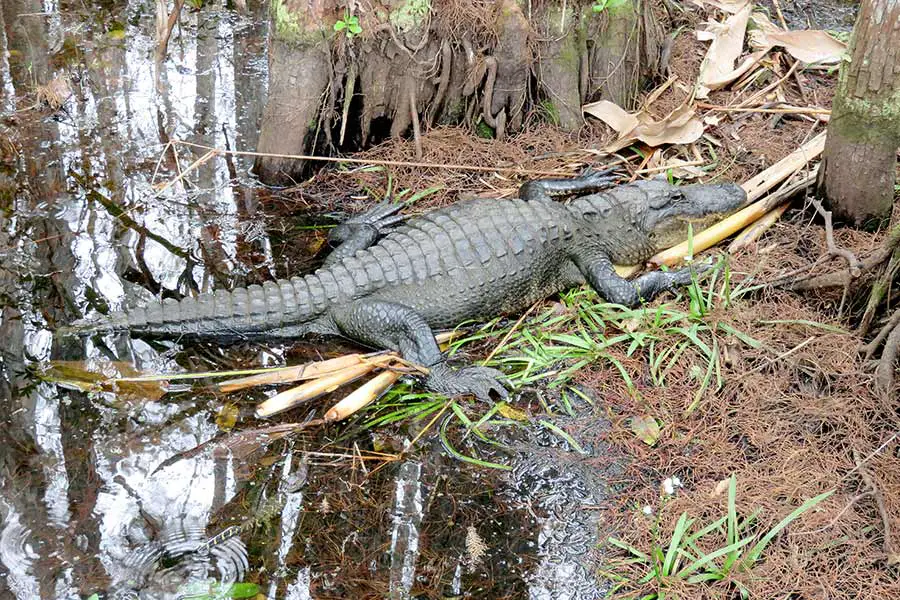
Regardless, the Everglades remains a beautiful, mysterious, almost transcendent place. The land is filled with elegant wading birds like the Roseate Spoonbill, the far-ranging tracks of the Florida panther, and an astonishing variety of reptiles and snakes. In addition, the Everglades include habitats like coastal mangroves, pine Flatwoods, and sawgrass marshes.
Corkscrew Swamp is located in the northwestern Everglades, in the area near Naples. The swamp covers about 13,450 acres. Most of this land is traditional swampy wetlands, but the swamp also contains 700 acres of virgin Bald Cypress forest, which is an important habitat for endangered Wood Storks.
Corkscrew Swamp Sanctuary History
The history of the Corkscrew Swamp Sanctuary dates back to 1913. In the early 1900s, the plumes of birds like egrets and herons were commonly used as fashion accessories. This demand for plumes created opportunities for hunters to cash in. Unfortunately, at the time, most hunters were not familiar with basic principles of conservation, and many bird species and habitats were utterly devastated by plume hunters.
The Audubon Society was upset at this destruction, and they employed the services of a warden named Rhett Green. Green soon developed a fearsome reputation: he reportedly told two plume hunters to send the word out that he (Green) would “shoot on sight any man with a gun who attempted to enter the Corkscrew.” The hunters took Green at his word, and Corkscrew Swamp was not bothered any further by plume hunters.
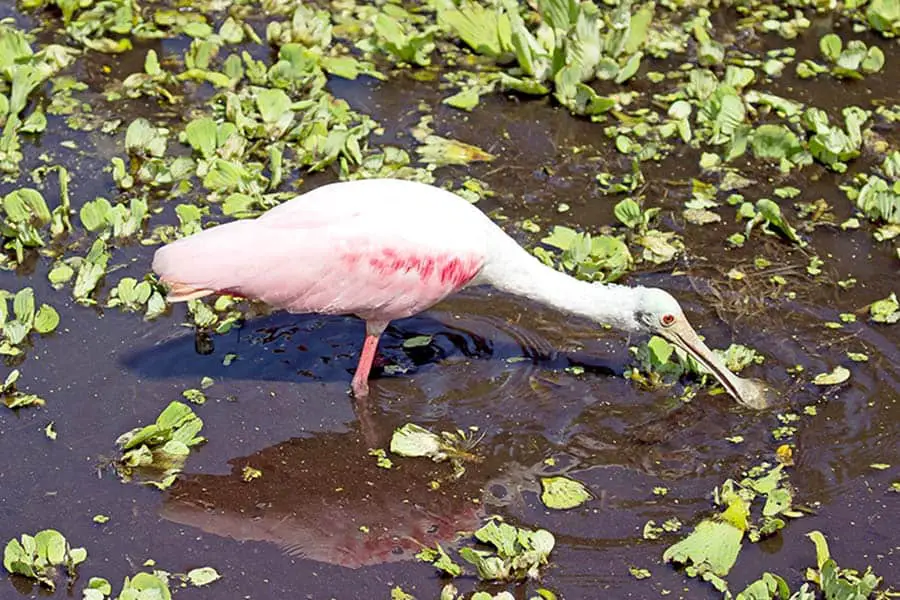
In 1953, the president of the Audubon Society published an article in the Miami Herald urging the governor to protect Corkscrew Swamp as an area of ecological and aesthetic importance. However, the governor ignored this request, so in 1955, the Audubon Society simply purchased the swamp. The initial purchase was soon expanded by donations and further acquisitions to the massive 13,450 acres that Audubon now owns.
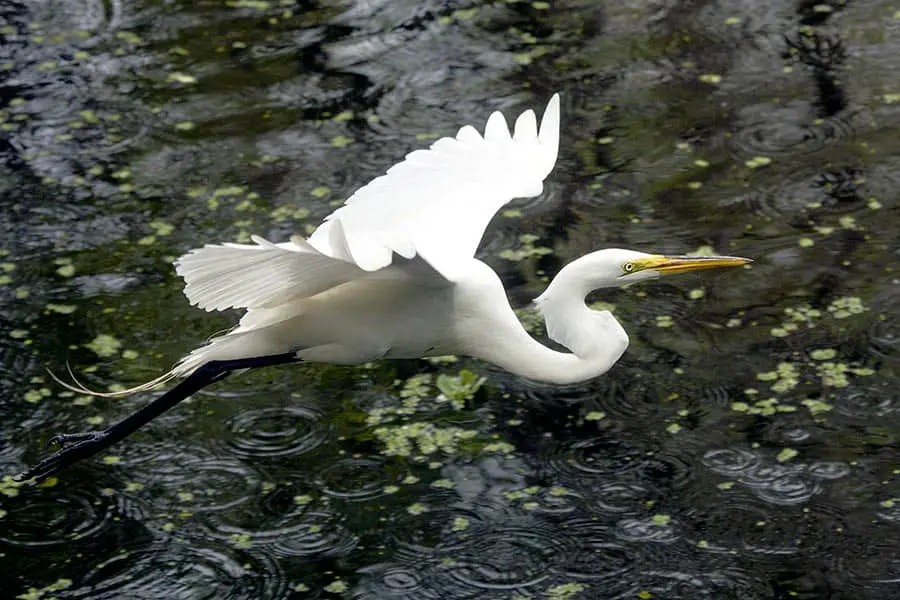
Why is it Called Corkscrew Swamp?
The origins of Corkscrew Swamp’s name have largely been lost to history. However, it is thought that the area was named after corkscrews because of a long, twisting river that once flowed from the south Florida wilderness into the Gulf of Mexico.
The use of Corkscrew as a place-name in this area is not unique to the swamp. The nearby Old Corkscrew Golf Club is located on Corkscrew Road and is just a mile or so away from Corkscrew Trace Airpark. There’s even a Corkscrew Village shopping plaza (stop and get a Publix Sub, you’ll thank us later) at the end of Corkscrew Road.
Phenomenal Florida Fun Fact: Corkscrew Swamp Sanctuary is home to the largest concentration of super ghost orchids in the world! These rare flowers are attached to trees high above the ground and tend to bloom in the high summer months of June and July.
Other Posts of Interest
- Can You Boat Across Florida?
- What Kind Of Fish Are In Biscayne Bay?
- Where Is The Best Place To See Wild Flamingos In Florida?
- Does Florida Have Pythons?
What Animals Live in Corkscrew Swamp?
Corkscrew Swamp is a great place to see some of Florida’s most beautiful wildlife. One of the most prominent residents of Corkscrew Swamp is the Wood Stork, which is currently listed as “Threatened” by the Federal Government. Other remarkable birds in the swamp include Sandhill Cranes, Roseate Spoonbills, Herons, and Limpkins.
You can also see many striking predatory birds. One of the most beautiful is the Swallow-Tailed Kite, whose distinctive tail feathers sail in the wind as the bird hunts. Other remarkable birds of prey in Corkscrew include Merlins, Osprey, and Cooper’s Hawks.
Corkscrew Swamp is an Audubon preserve, but it’s also home to a lot of cool ground-dwellers. The Florida panther has even been spotted in the Corkscrew. You can also see alligators and crocodiles and more than 27 species of snakes. The watery parts of the swamp have even been known to attract manatees. Finally, flower lovers will love seeing the wide variety of orchids that grow in the Corkscrew.
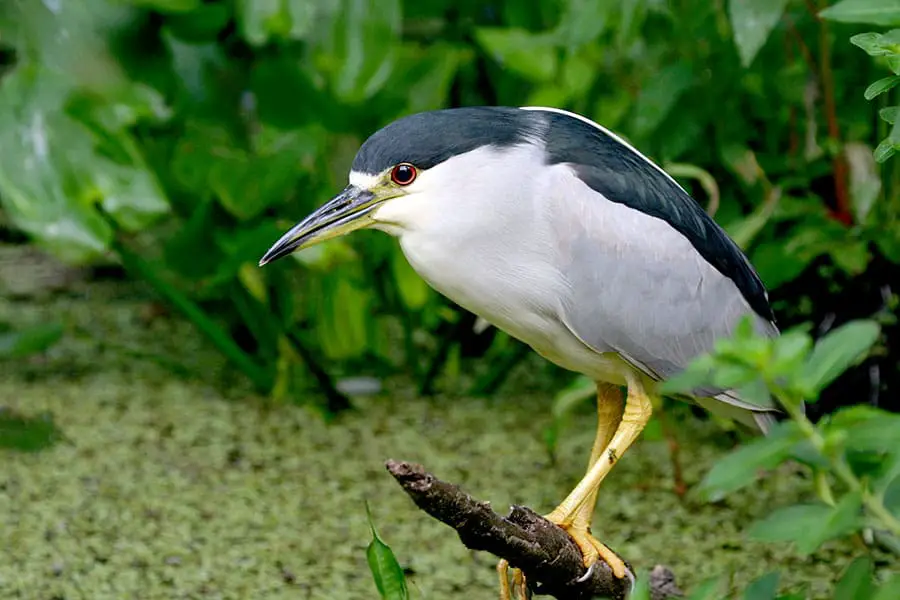
When is the Best Time to Visit Corkscrew Swamp?
South Florida is notoriously hot and humid, particularly during the summer and especially in woodlands like the Corkscrew Swamp. During the summer months of May through September, the Corkscrew Swamp is likely to be very hot and muggy. You can expect temperatures in the high 80’s to low 90’s with high humidity. You can also expect plentiful rain, which only makes the humidity more oppressive. Therefore, the summer months are not a good time to visit Corkscrew Swamp.
The winter months, on the other hand, are extremely comfortable. November through April tend to be warm but not hot, with low humidity and less rain. There’s also far less cloud cover during these months, which makes them perfect for outdoor adventures like going to Corkscrew Swamp.
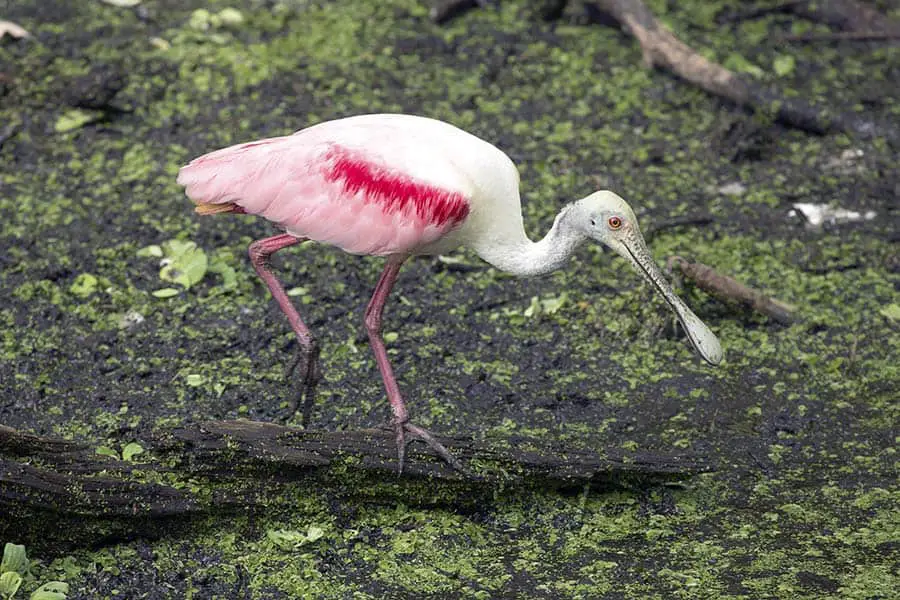
The best time of day to visit is early in the morning or late in the afternoon. There are three reasons for this:
- The weather tends to be milder in the mornings and evenings.
- Many birds and animals are more active during the periods around sunrise and sunset: you’re more likely to see interesting nature in the transitional periods between day and night.
- The low-angle sunlight of morning and evening hours makes for exquisite photography.
Who Maintains the Corkscrew Swamp Sanctuary?
The Corkscrew Swamp Sanctuary is owned and maintained by the Audubon Society. In the 1950s, Audubon tried to convince the state of Florida to purchase the land and keep it as a state park or wildlife preserve, but the state declined to do so. And while Corkscrew Swamp is technically part of the Everglades, it is not part of Everglades National Park and is not maintained or policed by the National Park Service.
Maintaining and managing the Sanctuary is a big task. Audubon employs teams of biologists, hydrologists, land managers, and citizen volunteers to keep the Sanctuary clean, safe, and free from invasive plants and animals.
Unfortunately, this responsibility is complicated by the rapid land development that continues to take place in South Florida. Overdevelopment upstream has affected water levels in the swamp, which will eventually impact the swamp’s ecosystem and could cause permanent damage to this pristine and beautiful place.
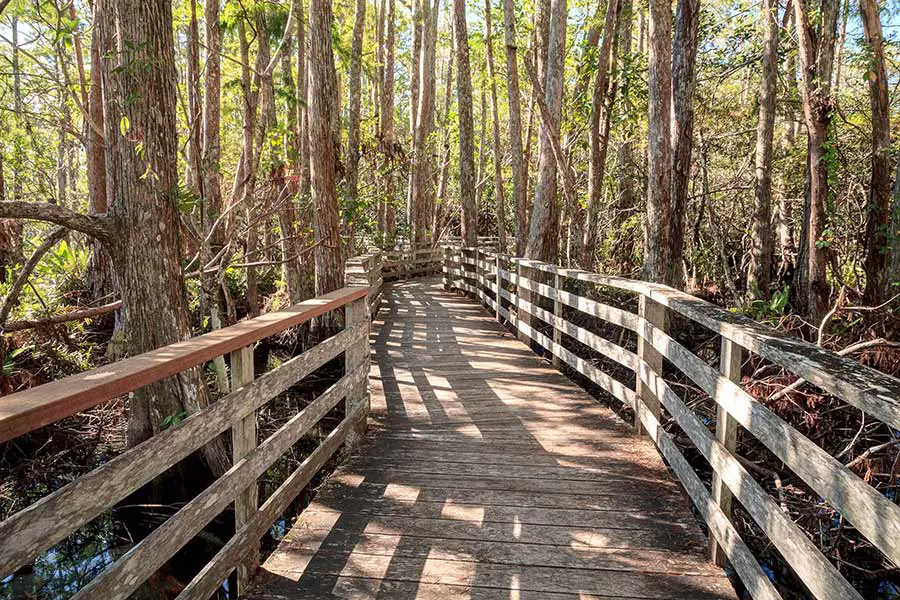
How Long is the Boardwalk at Corkscrew Swamp Sanctuary?
The wild swampland that comprises the Corkscrew Sanctuary would likely prove to be challenging hiking for all but the hardiest of adventurers. With that in mind, Audubon constructed a 2.25 mile-long boardwalk that takes guests through the various micro-habitats in the swamp. Visitors will follow the boardwalk through habitats like pine flatwoods, wet prairie, marshes, and finally, bald cypress forest.
Bald cypress forests are actually distant relatives of the famous redwood forests in California! Bald cypress trees can become enormous, growing to more than 120 feet in the air with diameters of more than six feet. These wooden giants are a critical part of the ecosystem. They provide shelter and nesting locations for animals ranging from the wood stork to salamanders, frogs, ducks, catfish, and even bald eagles.
Corkscrew Swamp Sanctuary: A Florida Gem
Florida is a land of outstanding natural beauty, whether you’re soaking up some sun at one of the world-class beaches or taking in the unreal wildscapes of the Everglades. The Corkscrew Swamp Sanctuary is an oasis of the wild in the middle of South Florida’s endless urban sprawl. But, no matter whether you go to see the beautiful birds, the rare flowers, or some of Florida’s most fascinating creatures, you’re sure to find something to inspire you in the Sanctuary. So bring along your camera and your sense of awe and wonder: you’ll need them both at the Corkscrew Swamp!
